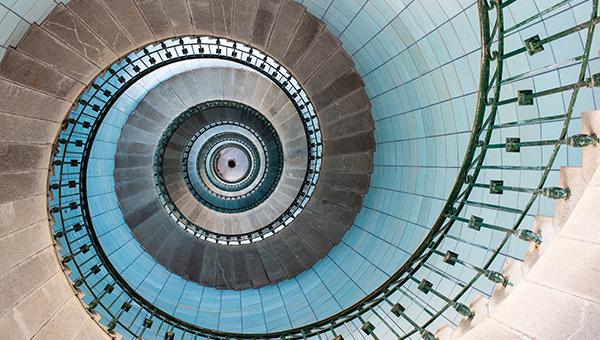SPYRAL HTN-ON MED at 3 Years: Renal Denervation’s BP Impact Endures
“I’m pretty excited about the field. I think there is a role for renal denervation in select patients,” Sripal Bangalore says.

WASHINGTON, DC—In patients treated with antihypertensive medication, renal denervation using the Symplicity Spyral radiofrequency catheter (Medtronic) provides additional reductions in blood pressure for up to 3 years, according to extended follow-up in the SPYRAL HTN-ON MED trial.
Compared with patients treated with a sham procedure, those who underwent denervation had a 10-mm Hg greater reduction in 24-hour systolic BP at the 3-year follow-up (P = 0.004), despite similar use of antihypertensive drugs, Felix Mahfoud, MD (Universitätsklinikum des Saarlandes, Homburg/Saar, Germany), reported recently at the American College of Cardiology (ACC) 2022 Scientific Session.
There were no safety issues, he said.
“Given the long-term safety and efficacy of renal denervation, it may provide an alternative, adjunctive treatment modality in the management of hypertension,” Mahfoud concluded. “These long-term results are specific, however, to radiofrequency [energy] and the catheter that was utilized in this study, and may not be generalizable to other renal denervation devices.”
Commenting for TCTMD, Sripal Bangalore, MD (NYU Langone Health, New York, NY), said, “I was pleasantly surprised by the fact that the blood pressure keeps going down in the RDN arm and to see that big of a difference at 3 years.”
Why the advantage for renal denervation appears to grow larger over time is not fully understood, but it might be that the procedure is mitigating some of the effects of nonadherence to medical therapy, he indicated. “It is possible that blood pressure is better controlled in this group of patients,” Bangalore postulated. “So in terms of the end-organ damage, it’s less, and that may make the patients more receptive to the medications they’re on.”
Longer-Term Results
The new data bolster the resurgent field of renal denervation. The disappointing results of the SYMPLICITY HTN-3 trial, released more than 8 years ago at ACC 2014, spurred much additional research to understand how to improve the technique. That eventually led to the launch of several smaller sham-controlled trials evaluating different technologies with or without background antihypertensive medications; most have demonstrated significant reductions in blood pressure up to 6 months after the procedure. Results from the Global SYMPLICITY Registry have suggested lasting effects out to 3 years, but data from sham-controlled trials beyond 6 months have been lacking.
The results presented by Mahfoud earlier this week and published simultaneously online in the Lancet help fill that gap. Previously, an analysis of the first 80 patients randomized in the SPYRAL HTN-ON MED trial, conducted at 25 sites across seven countries, showed that denervation using the Symplicity Spyral catheter produced a 7.4-mm Hg greater drop in 24-hour systolic BP than did the sham procedure at 6 months. Aspects of the trial design are relevant to the longer-term follow-up: medication changes were allowed starting at 6 months and both patients and physicians were unblinded at 12 months. In addition, patients initially assigned to the sham arm were offered renal denervation between 2 and 3 years, resulting in 13 crossovers.
At baseline and 6 months, the average number of antihypertensive drugs used in each group was about two, with that figure increasing to about three by 3 years. Overall medication burden—taking into account number, class, and dose of drugs—increased over time in both arms of the trial; the rise appeared steeper in the sham group, although the difference in burden was not significantly different at 3 years (P = 0.26).
On a background of similar medical therapy, renal denervation spurred greater reductions in a variety of ambulatory BP measures compared with the sham procedure at 3 years (all statistically significant):
- 24-hour systolic: 10.0 mm Hg
- Morning systolic: 11.0 mm Hg
- Daytime systolic: 8.9 mm Hg
- Nighttime systolic: 11.8 mm Hg
In addition, there was a 5.9-mm Hg larger fall in mean ambulatory diastolic BP with denervation (P = 0.006). The difference in average office systolic BP—favoring the active procedure—did not reach statistical significance (8.2 mm Hg; P = 0.07).
Of note, Mahfoud reported, the proportion of patients with 24-hour systolic BP controlled to below 140 mm Hg was greater in the denervation arm (83.3% vs 43.8%; P = 0.002).
There were few safety events through 3 years. In the denervation arm, one patient had a hypertensive crisis and stroke 427 days after the procedure and was eventually discharged in stable condition. One cardiovascular death occurred in the sham arm.
‘Pretty Excited About the Field’
During a panel discussion following Mahfoud’s presentation, Martin Leon, MD (NewYork-Presbyterian/Columbia University Irving Medical Center, New York, NY), acknowledged the difficulty in performing a trial like this and commented, “I would argue that the results at 36 months are at least as important as the ones at 6 months.”
One of the promises of renal denervation is that patients might be able to reduce their antihypertensive drug burden, Leon said, noting that that wasn’t the case here.
Indeed, a position paper from the European Society of Hypertension—for which Mahfoud was a co-author—published last year considers renal denervation as a third, complementary option for hypertension, along with lifestyle changes and medications.
As for how to choose which patients are most likely to respond to denervation, Mahfoud said that investigators are looking into that and that an extension of SPYRAL HTN-ON MED, which aims to randomize another 260 patients, should provide more information.
“At the end, I guess it will be a treatment modality that we have to choose wisely and offer to our patients with uncontrolled blood pressure in combination with antihypertensive drugs, and from my personal perspective, patient preference may be one of the drivers here in the decision-making process,” Mahfoud said.
Bangalore agreed that renal denervation likely has a place in the treatment of hypertension, at least for high-risk patients, as the amount of BP-lowering observed would be expected to have a “profound impact” on cardiovascular events. He said he’d like to see a trial powered for clinical outcomes to prove that, adding, however, that in “every trial so far, if you reduce blood pressure, as long as you don’t have an off-target effect, you should reduce events.”
Overall, Bangalore said, “I’m pretty excited about the field. I think there is a role for renal denervation in select patients, and we should see if clinical outcomes are reduced.”
Todd Neale is the Associate News Editor for TCTMD and a Senior Medical Journalist. He got his start in journalism at …
Read Full BioSources
Mahfoud F, Kandzari DE, Kario K, et al. Long-term efficacy and safety of renal denervation in the presence of antihypertensive drugs (SPYRAL HTN-ON MED): a randomised, sham-controlled trial. Lancet. 2022;Epub ahead of print.
Disclosures
- The trial was funded by Medtronic.
- Mahfoud reports receiving support from Deutsche Gesellschaft für Kardiologie, Deutsche Forschungsgemeinschaft, and Deutsche Herzstiftung, and having received scientific support and/or speaker honoraria from AstraZeneca, Bayer, Boehringer Ingelheim, Medtronic, and ReCor Medical.
- Bangalore reports consultant fees/honoraria from Abbott Vascular, Amgen, Biotronik, Meril, Pfizer, Reata, and SMT, and research grants from Abbott and Reata.
- Leon reports receiving research grants from Abbott, Boston Scientific, Edwards Lifesciences, and Medtronic and having other relationships with Ancora and Gore Medical.





Comments